Early November 2016 (1st-10th)
/For a third straight period, dry conditions were maintained, which allowed for excellent birding opportunities. Like last period, there was a great deal of excellent finds to discuss, and top birds for Virginia Beach included PAINTED BUNTING, CLAY-COLORED SPARROW & LARK SPARROW. First-of-season arrivals this period revolved mostly around waterbirds and this trend should continue on into November; we still saw our first-of-fall Bonaparte’s Gull (1 Nov), Bufflehead & Brant (6 Nov) and Lesser Scaup, Red-throated Loon & Purple Sandpiper (10 Nov)! Early arrivals this period included “Ipswich” Savannah Sparrow (3 Nov), well ahead of their 15 Nov expected date, and occurrences of late birds included Yellow-crowned Night-Heron (latest 5 Nov), Prairie Warbler (10 Nov) & Caspian Tern (7 Nov). High counts of 2400 Laughing Gulls were reported from Pleasure House Point’s sandbars in the Lynnhaven River estuary, and we continue to see White-crowned Sparrow (high count of 3, all immatures), Red-breasted Nuthatch and Purple Finch reports around the region. WEATHER: Overall early November’s average daily high temperatures continued to fall, dropping to 64.3 degrees F (-5.6 degrees from the late October period); the average daytime lows also continued the downward trend, falling to 45.7 degrees F (-2.6 degrees). The previous 10-year average daily highs & lows for the early November period were 62.7 & 46.5 degrees F, respectively which puts this period in 2016 at +1.6, and -0.8 degrees (so fairly typical) when comparing to the averages. Also during the previous 10-year period, the maximum average daily highs & lows were 72.7 & 59.2 degrees F (2015), so we came in much lower comparably this year. Conditions remained fairly dry throughout the period, with only two days producing measurable rainfall to the tune of 1.55 inches (with 0.68” falling 4 Nov, and 0.87” on 9 Nov).
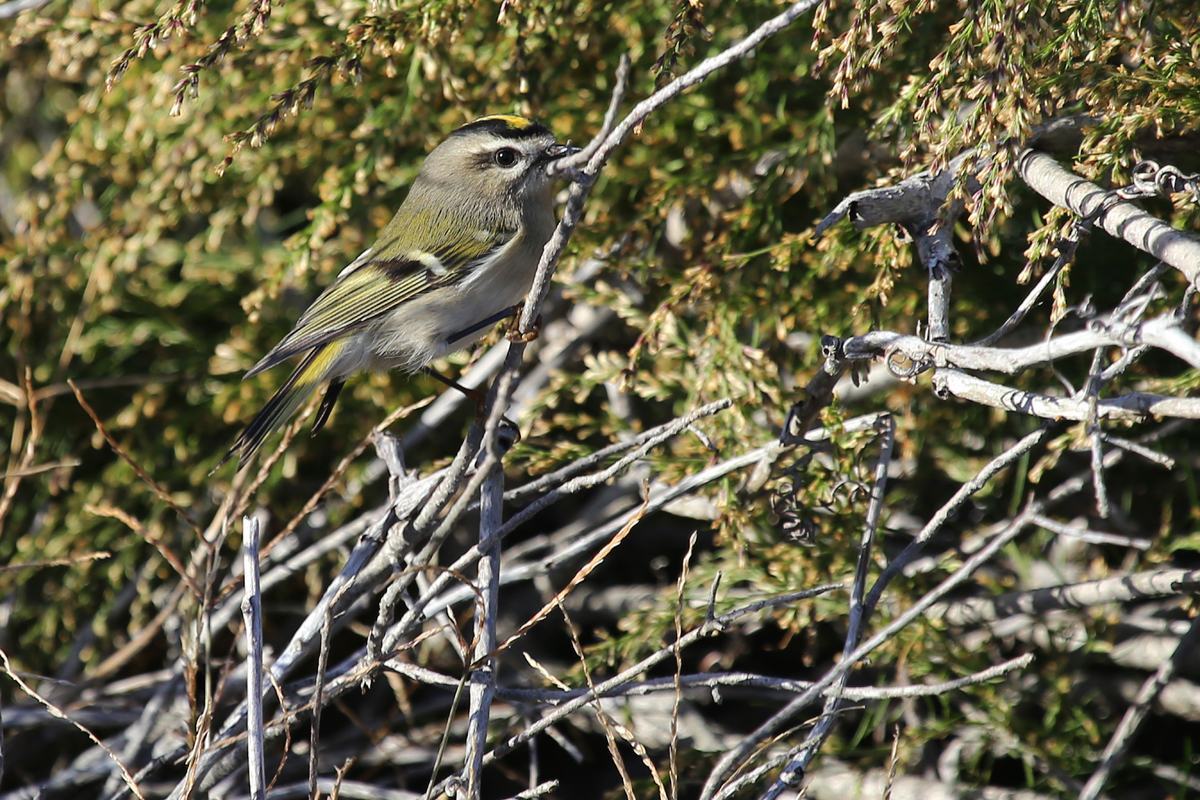

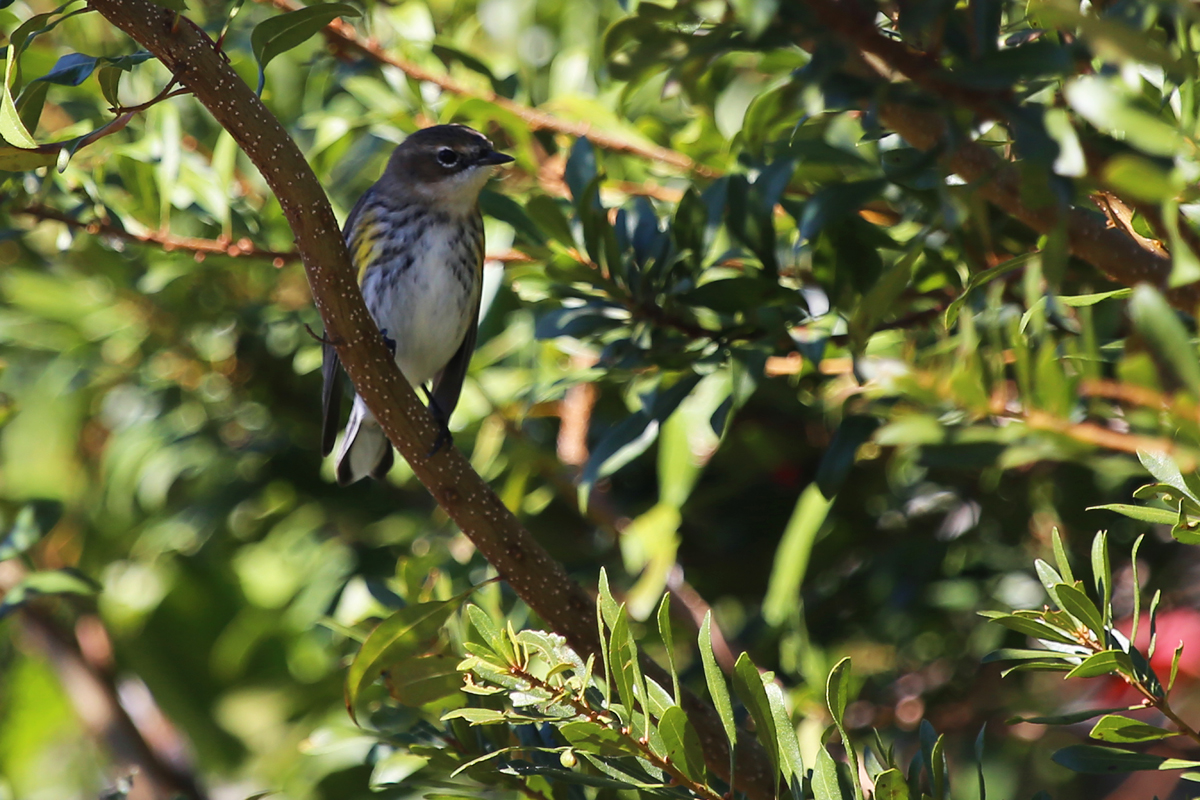

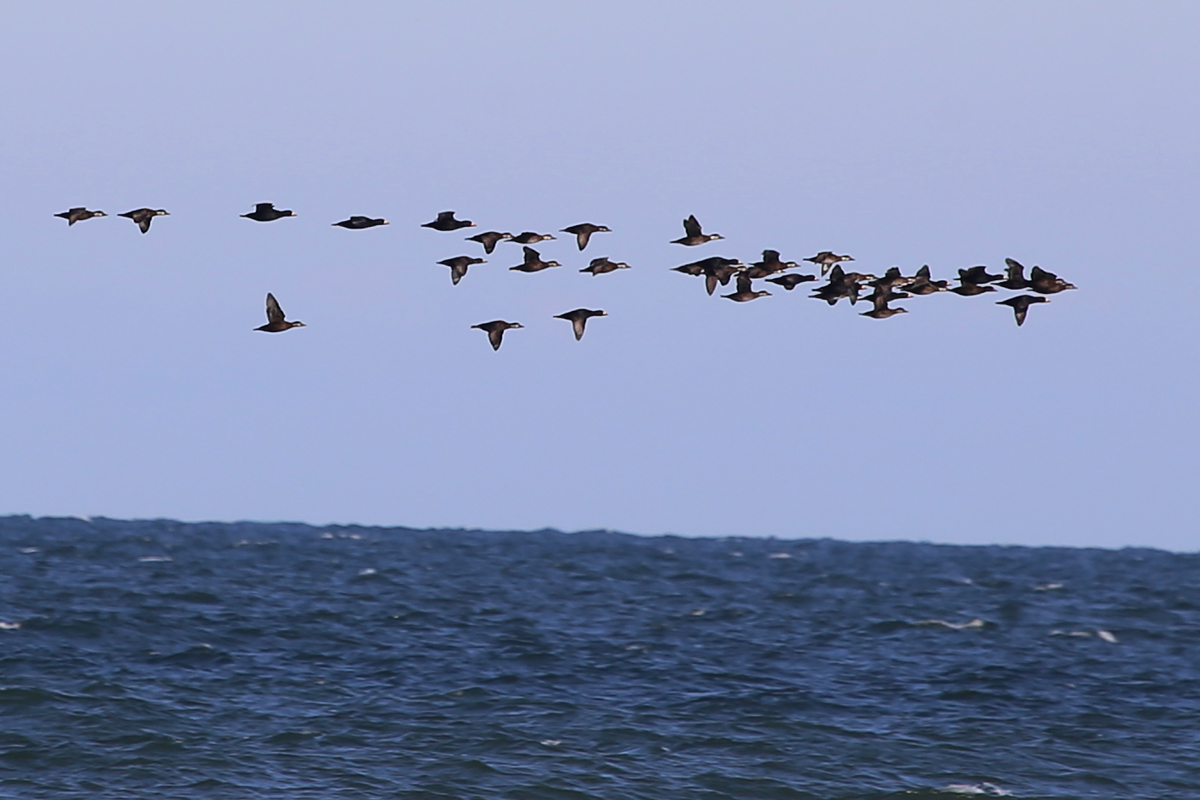
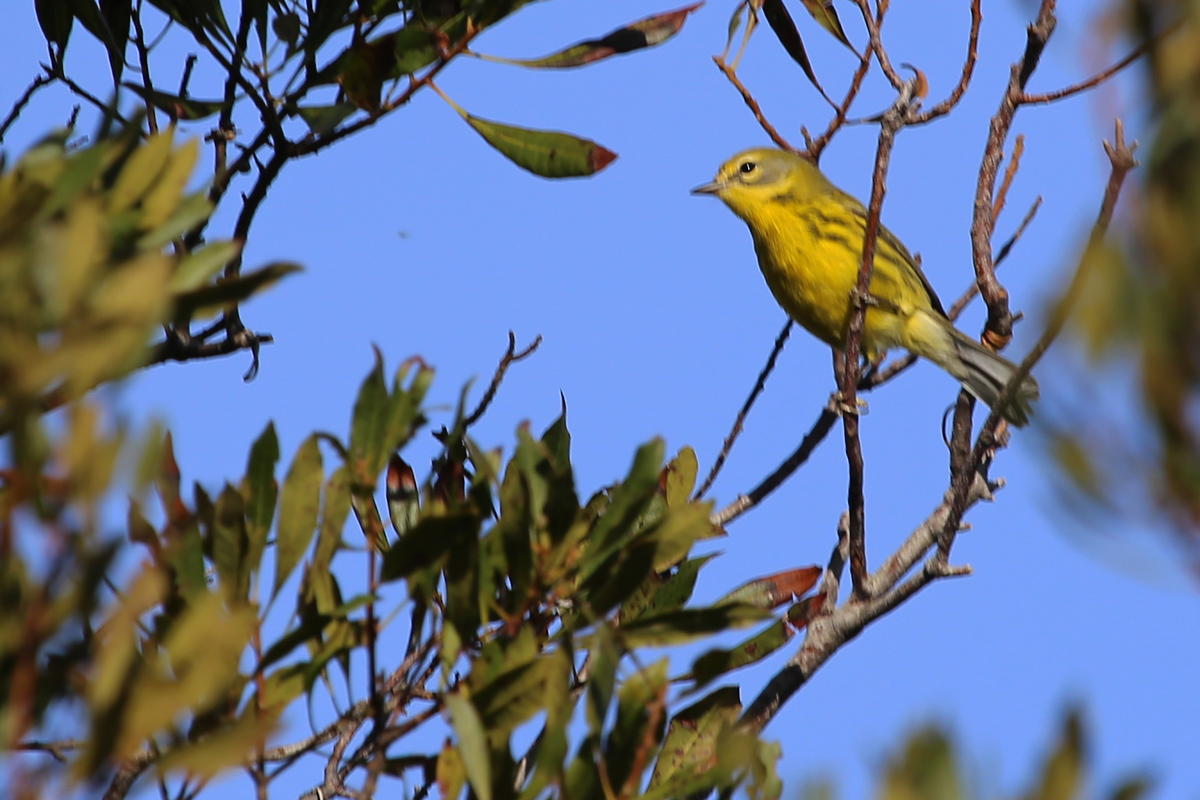
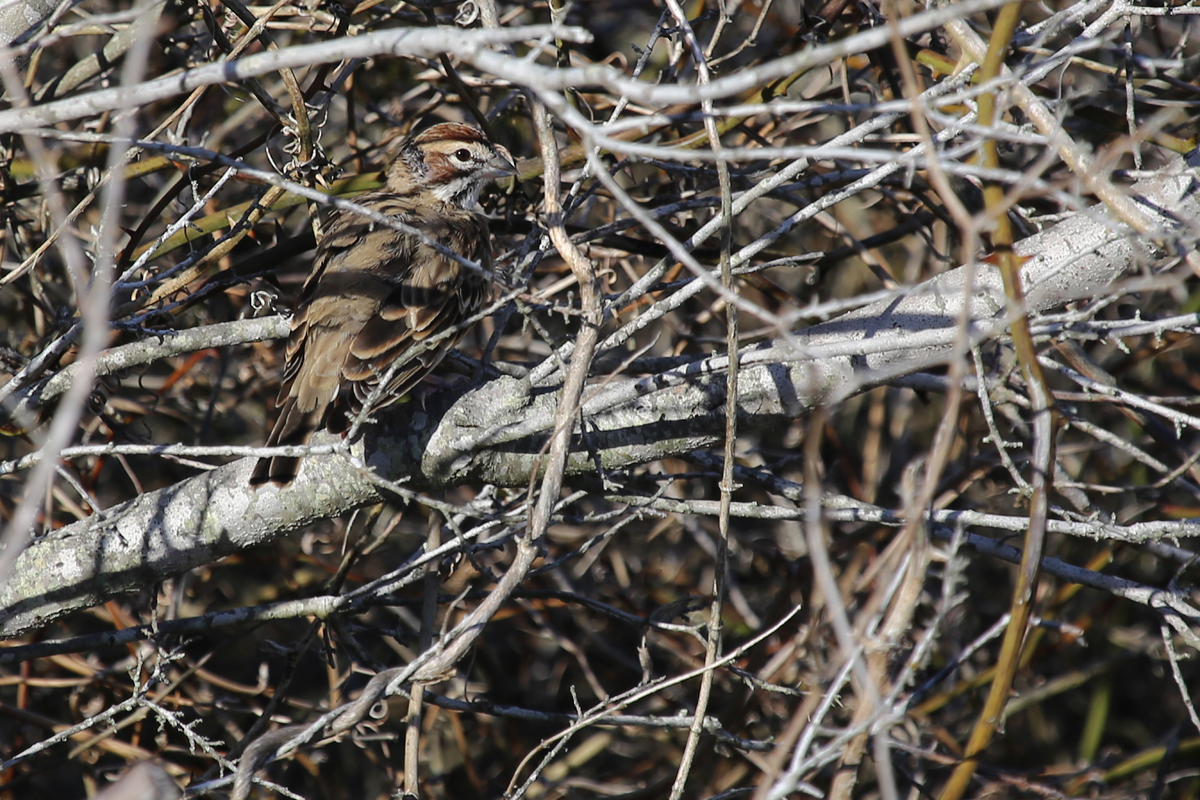
OBSERVATIONS: Despite Daylight Savings Time having reached its end on 6 Nov, and with the earlier sunsets, there was still a considerable number of checklists reported to eBird this period. Back Bay NWR continued to be the primary producer of rarities during early November, providing both a female PAINTED BUNTING and a LARK SPARROW. Perhaps the same individual that was originally detected at the park on 13 Oct (Andrew Baldelli), the PAINTED BUNTING (this time missing its tail feathers) was observed on 5 Nov (Tommy Maloney & Jason Schatti) near the base of the Kuralt Trail. It is possible that this is a different bird, but without photographs to attempt a comparison, there’s no way to be certain and any discussion is purely speculative. However, given that it wasn’t detected for several weeks, and this area of Back Bay NWR gets a considerable number of observers, it doesn’t seem out of the question that it could be a separate individual. Near this same area, a LARK SPARROW (5 Nov / ph. Mary Catherine Miguez) that has been present since at least 23 Oct (and possibly as early as 19 Oct) afforded many observers great views (and some excellent photographs) throughout the period. This individual was noted back on 23 Oct as having an injury/wound to the back of the right side of the head. The obvious mark has made it easy to confirm the same individual has stayed at this spot, and fortunately it seems to be foraging and getting around just fine, so hopefully it will overcome the injury. So far this season, we’ve had at least 3 different Lark Sparrows take up temporary residence at the park, and with the individual from February-March added in, we’ve had at least 4 at Back Bay NWR in 2016 (with 5 total for Virginia Beach due to a final individual noted at the Princess Anne Athletic Commons during the winter). Continuing the sparrow trend from the previous periods, a CLAY-COLORED SPARROW was also found along Ashville Park Boulevard foraging with a mixed group of sparrows and warblers near Flanagans Lane (5 Nov / Mary Catherine Miguez). Given that we’ve had Clay-colored Sparrows at Taste Bayville, Back Bay NWR, and Little Island Park already this season, this now makes 4 separate individuals that have been found within Virginia Beach. This number sits in stark contrast to the remainder of Virginia, where only one other individual has been observed this fall, at Sky Meadows SP in Fauquier County. The Gold Book notes that this species’ Coastal Plain distribution is that of a “rare but regular fall transient and early winter visitor along coast, with 3-5 (rarely as many as 10) reported in the region most year”. Records become much rarer in the Piedmont, and in the Mountains & Valleys regions of the state. Pretty spot on! A border-line rarity also showed up at Pleasure House Point NA in the form of our first-of-season “Ipswich” Savannah Sparrow (3 Nov / ph. Mary Catherine Miguez & also obs. Tommy Maloney). This race/subspecies of Savannah Sparrow breeds exclusively on Sable Island, Nova Scotia, Canada, and pops up here along the coast during the winter. What makes this an even more interesting record though, is that it was 12 days ahead of the expected arrival date of 15 Nov listed in the Gold Book (though still within the extreme dates for records). This race is an annual visitor to the outer coastline, but becomes increasingly rare as you move further inland. Other first-of-season arrivals (all within normal expectations) included a pair of Bonaparte’s Gull (1 Nov / South Thimble Island / Janis Stone), a small group of 3 Bufflehead (6 Nov / Pleasure House Point NA / Bryan Barmore), a flock of 22 Brant (6 Nov / Sandy Bay Dr. / Timothy Barry), 7 Lesser Scaup & a single Red-throated Loon (10 Nov / Little Island Park / Andrew Baldelli), and lastly, a pair of Purple Sandpiper (10 Nov / Rudee Inlet / Karen & Tom Beatty). These species should all become increasingly common as the temperatures continue to drop and winter starts to take hold. It won’t be long before Red-throated Loons will be counted in massive numbers from the coastline, and Buffleheads should start populating any open waters as well. The Brant winter annually around the Lynnhaven River, but can be tough at times to actually see, since they will forage out among the marshy islands offshore, and with no real elevated terrain nearby to view from, they can easily get missed. To that point, the brand new westbound span of the Lesner Bridge is set to open on Friday, 11 Nov, and this might provide a bit of altitude to view the estuary from so there’s always the chance to catch a group in flight out of the corner of your eye while crossing. Given that the Purple Sandpipers have now arrived at Rudee Inlet, they should also be reported soon from the Chesapeake Bay Bridge-Tunnel, Fort Story, and possibly East Beach. In fact, one was even reported at Grandview in Hampton last week. Anywhere with armored shorelines will draw these lovely shorebirds in, with the CBBT being their most densely populated space in Virginia Beach. In addition to the early & first arrivals, we had some species reported this period that have now passed their expected dates of departure, making them late lingerers. Included among this group was a single Yellow-crowned Night-Heron (5 Nov / Oxford Dr. / Rob Bielawski), a Prairie Warbler at Back Bay NWR (6 Nov/ Rob Bielawski) and what is likely a second Prairie Warbler at Little Island Park just to the north (10 Nov / Mary Catherine Miguez), and lastly a pair of Caspian Terns at First Landing SP (7 Nov / Shawn Callahan). For some perspective, last year our final Yellow-crowned Night-Heron sighting occurred on 27 Oct, and our last Caspian Tern was on 6 Nov. The Prairie Warbler is an interesting one, with a more-storied-history, as an individual was present during the Rarity Roundup at Back Bay NWR on 14 Nov 2015 (Matt Anthony & Nicholas Newberry), with another, possibly the same one, still there on 30 Dec 2015 (Tommy Maloney). In fact, another was even photographed in mid-winter 2016 at First Landing SP, on 1 Feb (J. Aguiar) making it only the second February record for Virginia in eBird. So, the Prairie Warblers do seem to stay later each year, but it is still a rare occasion to find one after October, or before April. In 2015 it seemed to make a bit of sense, as temperatures stayed considerably higher at this point in the season, so we’ll see what the weather heading into winter this time around does to the species. Lastly, a couple other items of interest, we had a very high count of 2400 Laughing Gulls reported from Pleasure House Point (6 Nov / Bryan Barmore) which is a major late fall staging area for their southerly migration, and a pair of American Bitterns was present at Princess Anne WMA’s Whitehurst Tract (6 Nov / Rob Bielawski) which falls into the “neat” but not necessarily noteworthy category (like Sora, or Virginia Rail, or owls & nightjars that just aren’t often reported, but are present). American Bitterns are a species that is highly sought after for statewide birders, and this park & Back Bay NWR have been the most reliable for them. Observing one American Bittern makes for a great day, two makes it excellent. During this particular visit, the park staff was out mowing the impoundments to prepare them for waterfowl, so hopefully we will finally start to see some ducks, geese & potentially even Tundra Swans out using them. A quick note on Princess Anne WMA: This park is closed Monday-Saturday for wildlife management and hunting purposes, and is only open on Sunday for wildlife viewing (included birding) during Sep-Apr. For more information, visit the official park website, and keep in mind that a WMA access pass is required here as well.
SPECIES DOCUMENTED BY MEDIA and submitted to eBird for Virginia Beach during this period included: 1 NOV – Red-breasted Nuthatch (Laurel Cove Dr. / Loretta Silvia); Northern Harrier & Boat-tailed Grackle (Little Island Park / Karen & Tom Beatty); Golden-crowned Kinglet, Hermit Thrush & Palm Warbler (Back Bay NWR / Karen & Tom Beatty); Ruddy Turnstone, Sanderling & Royal Tern (South Thimble Island / Janis Stone). 2 NOV – Cooper’s Hawk (Sandy Bay Dr. / Timothy Barry). 3 NOV – Northern Harrier & Eastern Phoebe (Back Bay Landing Rd. / Karen & Tom Beatty); Nelson’s Sparrow, White-throated Sparrow, Savannah Sparrow (Ipswich & Savannah races) & Song Sparrow (Pleasure House Point NA / Mary Catherine Miguez); Peregrine Falcon (Atlantic Ave. / Mary Catherine Miguez). 4 NOV – Hermit Thrush (Francis Land HP / David Clark). 5 NOV – Brown-headed Nuthatch, Savannah Sparrow & Swamp Sparrow (Back Bay Landing Rd. / Karen & Tom Beatty); Double-crested Cormorant, Great Egret, Black Vulture, Osprey, Laughing Gull, Belted Kingfisher, Red-bellied Woodpecker, Downy Woodpecker, American Crow, Carolina Chickadee, Brown Creeper & Yellow-rumped Warbler (Stumpy Lake NA / David Weisenbeck); Golden-crowned Kinglet, Gray Catbird, Palm Warbler & LARK SPARROW (Back Bay NWR / Karen & Tom Beatty); Ring-necked Duck (Lake Tecumseh / Mary Catherine Miguez); Eastern Phoebe (Back Bay Landing Rd. / Rob Bielawski); Sharp-shinned Hawk, Golden-crowned Kinglet, Gray Catbird, Northern Mockingbird, Yellow-rumped Warbler, LARK SPARROW & Song Sparrow (Back Bay NWR / Mary Catherine Miguez); Yellow-crowned Night-Heron (Oxford Dr. / Rob Bielawski). 6 NOV – Bald Eagle & Savannah Sparrow (Princess Anne WMA Beasley Tract / Andrew Baldelli); American Bittern & Yellow-rumped Warbler (Princess Anne WMA Whitehurst Tract / Rob Bielawski); Black Scoter, Brown Pelican, Lesser Black-backed Gull, Golden-crowned Kinglet, Prairie Warbler & LARK SPARROW (Back Bay NWR / Rob Bielawski). 7 NOV – Purple Finch (Glenmore Hunt Tr. / Karen & Tom Beatty); LARK SPARROW, White-crowned Sparrow & Swamp Sparrow (Back Bay NWR / Pamela Monahan). 8 NOV – Canada Goose, Double-crested Cormorant, Great Blue Heron, Great Egret, Laughing Gull, Yellow-bellied Sapsucker, Downy Woodpecker, Northern Flicker, American Crow & Yellow-rumped Warbler (Stumpy Lake NA / David Weisenbeck); Red-bellied Woodpecker, Yellow-bellied Sapsucker, Downy Woodpecker, Carolina Chickadee, Red-breasted Nuthatch, White-breasted Nuthatch, Carolina Wren, Yellow-rumped Warbler, Dark-eyed Junco, Northern Cardinal & House Finch (Lago Mar / Mary Catherine Miguez); Boat-tailed Grackle (Rudee Inlet / David Clark). 9 NOV – Gray Catbird, LARK SPARROW, White-crowned Sparrow & Song Sparrow (Back Bay NWR / Karen & Tom Beatty); Mallard (Laurel Cove Dr. / Loretta Silvia). 10 NOV – Ruddy Turnstone (South Thimble Island / Kim Harrell); Mallard, Cooper’s Hawk, Palm Warbler, Prairie Warbler & Boat-tailed Grackle (Little Island Park / Mary Catherine Miguez); Black Scoter & Lesser Black-backed Gull (Rudee Inlet / Karen & Tom Beatty).
LOOKAHEAD: As with last period, temperatures are likely to bounce around a bit, but the overall trend will continue to drive in cooler weather through mid-November. November is vagrant-seeking time here on the coastline, and all birders should be aware that some interesting species have their highest probabilities of being spotted this time of year. These can include Gray Kingbirds, as we have already seen here this fall, but other species to look for would be Western Kingbird (or any of the yellow-bellied-kingbird species, ie. Tropical/Couch’s/Cassin’s), Say’s Phoebe, Vermillion Flycatcher, Ash-throated Flycatcher, Scissor-tailed Flycatcher (one is currently in Northampton County!), and even Townsend’s or Black-throated Gray Warblers. Also, please remember that of the expected species arriving or passing through here during the fall season, we have not yet logged our first American Woodcock & Horned Grebe (early October arrivals), Rusty Blackbird, Redhead, Greater Scaup, White-winged Scoter & Great Cormorant (mid-October arrivals), Fox Sparrow, Harlequin Duck, Snow Goose, Common Eider, Long-tailed Duck & Red-breasted Merganser (late October arrivals), Canvasback & Common Goldeneye (earlyNovember arrivals) and Snow Bunting (mid-November arrivals) in Virginia Beach yet this fall. We should begin to see more waterfowl in the coming period as well, since thus far they have been rather nonexistent; though, perhaps they’re present, and most birders just haven’t focused on their habitat when birding due to the songbird movements.
Next Entry | Entry Index | Previous Entry
For more information on this thrice-monthly Birding Blog, please check out the Journal Overview Page on the website. It provides background information as to what sightings are considered for the blog, details about the format of the blog, and it will likely answer many other questions that readers might be wondering about as well! As always, thank you for reading, and please leave me a comment below (you may use your Facebook, Gmail or other accounts to easily do so), or just click the Heart icon to the lower right of this post to let me know you stopped in!